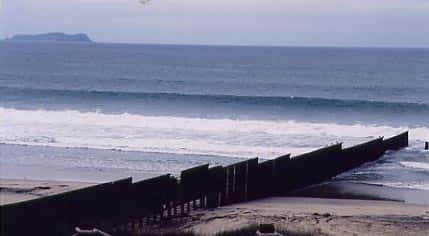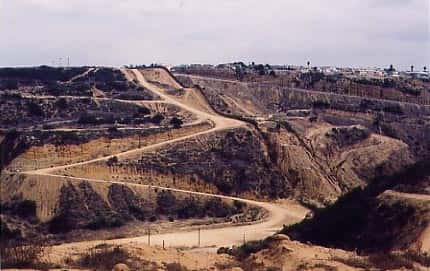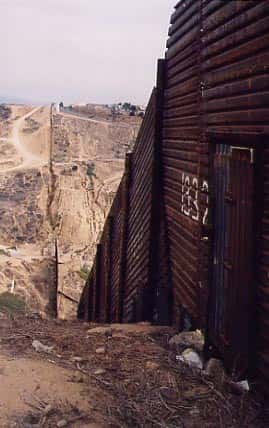Southern Barrier, Part 2
The third barrier system has todate been only chain link fencing.
In the urban areas — comprising about 55 miles of the entire 2,000 mile border — the fencing and / or No Man’s Land
is brightly illuminated from dusk to dawn. This illumination can be from floodlamps mounted along the centerline of the No Man’s Land
or the light can be provided by portable gasoline power motor generator units.
Because undocumented migrants
often attack the Border Patrol Agents when the Agents traverse certain key access roads, additional illumination is provided at those points of vulnerability. This illumination is usuallyproved by portable gasoline powered mortor generator units.
The United States’ barrier system starts beyond the surfline in the Pacific Ocean.

This barrier consists of standard railroad rail that has been specially coated to withstand the vagaries of salt, surf and sea.

Moving eastwards dangerous access roads allow the Border Patrol to move agents along the border. the tight switchbacks are ware undocumented migrants
smash large boulders into vehicle windshields and the most dangerous have dedicated lights.

Here you can see the standard corrugated steel plate barrier as it now pitches down into a canyon and then up the other side.
The barrier surrenders between one and three feet of U.S. territory to Mexico. This is done to allow workers to maintain the barrier without entering the Repubic of Mexico.
There is an access door just to the right of the 1237 marking in the photo to the left.
